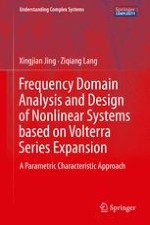This book is a systematic summary of some new advances in the area of nonlinear analysis and design in the frequency domain, focusing on the application oriented theory and methods based on the GFRF concept, which is mainly done by the author in the past 8 years. The main results are formulated uniformly with a parametric characteristic approach, which provides a convenient and novel insight into nonlinear influence on system output response in terms of characteristic parameters and thus facilitate nonlinear analysis and design in the frequency domain. The book starts with a brief introduction to the background of nonlinear analysis in the frequency domain, followed by recursive algorithms for computation of GFRFs for different parametric models, and nonlinear output frequency properties. Thereafter the parametric characteristic analysis method is introduced, which leads to the new understanding and formulation of the GFRFs, and nonlinear characteristic output spectrum (nCOS) and the nCOS based analysis and design method. Based on the parametric characteristic approach, nonlinear influence in the frequency domain can be investigated with a novel insight, i.e., alternating series, which is followed by some application results in vibration control. Magnitude bounds of frequency response functions of nonlinear systems can also be studied with a parametric characteristic approach, which result in novel parametric convergence criteria for any given parametric nonlinear model whose input-output relationship allows a convergent Volterra series expansion. This book targets those readers who are working in the areas related to nonlinear analysis and design, nonlinear signal processing, nonlinear system identification, nonlinear vibration control, and so on. It particularly serves as a good reference for those who are studying frequency domain methods for nonlinear systems.
